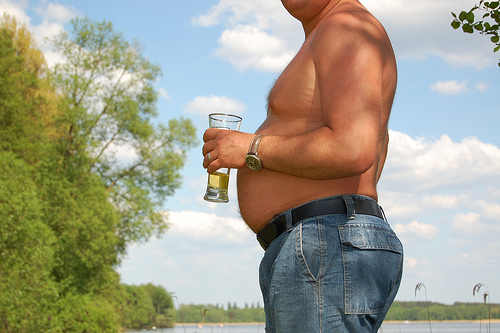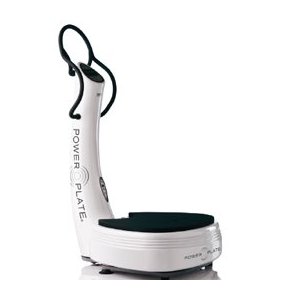Whole-Body Vibration and Performance: When is it Appropriate?
Happy Independence Day to all my American friends and fellow fitness junkies!! I managed to celebrate Canada Day on July 1st with the Future at her sisters place in Spruce Grove, wishing her parents a speedy trip back to Saskatchewan after a fantastic meal of cheese bread and pasta with meat sauce, and carbs with more carbs on top of carbs. Can we say water retention??
Aside from that, it was pretty much my ideal weekend. Lots of sun, some good lawn mowing, and a whole lotta sleeping in. The only downside was the screaming and hollering Lindsay was doing as her Roughriders decided to phone in their first game of the year against the Eskimos. That and her trip to the optometrist to extract part of a ripped contact from her eye. Seriously, that wasn’t cool, makers of contact lenses.
So one of the most popular pieces of exercise equipment that has come around in the past 10 years is whole-body vibration platforms. Most notable of these is the PowerPlate, which retails for about $6,000-18,000 each. Of course you can get more economical pieces from other companies ranging from $400-4,000, but where’s the fun in that??
Whole-body vibration has been touted as a way to lose weight, increase strength, crank up muscle size gains, cure cancer and even rescue kittens from neighborhood trees all while pouring THE best cup of coffee you’ve ever tasted. Okay, maybe not quite that far, but the first three are common claims. But does whole-body vibration training (WBVT) actually result in significant performance gains or weight loss compared to other modalities? Let’s take a look.
Strength Gains
In studies comparing a squat training program using a Smith machine (I know, I know, but research guys aren’t great at coaching technique) Ronnestad (2009) showed vibration training caused a significant increase in lower body strength over non-vibration training at 50 Hz, but not at 35 Hz or 20 Hz. The comparison held up when looking at both trained and untrained individuals.
Lamont et al (2011) showed no difference in 1RM or 8RM squat strength increase over a 7 week period between WBVT squat and no vibration squat groups, but did show a slightly bigger increase in lean body mass gain when compared to a control group over a 7 week intervention.
Eckhart et al (2011) found that when performing squats on a vibration platform there was higher quad activation by EMG compared to squatting on the solid ground. (NOTE: this would be difficult to determine with external electrodes, as the vibration may cause some artifact with the signal being picked up on the skin. Intramuscular electrodes would provide a more accurate reading, but would suck holy hell for the participants to have needles jabbed into their legs and then have to squat).
End Result
There doesn’t seem to be much benefit to using the WBVT for increasing total strength when used before or during exercise sets.
Power Gains
Studies that looked at WBVT on lower body power tended to use the vertical jump performance as the marker. Armstrong et al (2010) used different frequencies of vibration and tested vertical jump before, immediately after, and at 5 minute intervals following vibration or no vibration, and found there was no difference in jump height between the two sub-groups.
Turner et al (2011) found that after spending 30 seconds holding an isometric squat on either solid ground or on a WBVT, there was only a 6% gain in vertical jump performance between pre- and post-vibration at 40 Hz, but not at other frequencies.
Dabbs et al (2011) looked at the possibility that different rest intervals following vibration may alter the vertical jump, but found there was no difference in jump performance at different rest intervals up to 2 minutes after WBVT, but also found that at each rest interval vertical jump performance was higher than in a control group.
End Result
WBVT may be beneficial for increasing power output through jump performance. This would be significant in athletic populations, as well as the elderly, who have been shown to need to maintain lower body power more than any other component of fitness in order to avoid falls and loss of function. Although, that being said I wouldn’t advise having Babba throwing down some max height jumps, unless she’s built like this:
Fat Loss
Roleants et al (2004) looked at vibration training compared to combination of cardio and resistance training on weight loss, muscle gain, and strength, and found no difference in untrained females between the two groups.
Fieldstad et al (2009) found that WBVT and resistance training caused a greater loss of body fat compared to resistance training alone in untrained post-menopausal women with an 8-month intervention.
Kazushige et al (2005) looked at blood hormonal markers for any presence of fat burning in young men following vibration, and found that after performing one session of 60 seconds on, 60 seconds off in a partial squat for 10 sets, epinephrine and norepinephrine were higher compared with control, and there was also an increase in free fatty acids, but no increase in blood glycerol. They concluded that the lack of change in glycerol between before and after vibration training was not enough to show a presence of a fat burning effect.
It should be noted that none of the above studies showed any dietary interventions.
End Result
No one seems to agree on this one. Some people say it causes great big heaping decreases in fat, and others say there’s no difference.
So after reviewing these studies, you could conclude that WBVT may not be applicable for seeing any type of performance outcome and weight loss goal. That being said, there is a growing body of evidence showing that WBVT is very beneficial for early-stage proprioception and injury rehab, as well as neuromotor and neurovascular dysfunctions, as well as for maintaining and even developing some bone mineral density for osteoporosis.
In my humble opinion, there doesn’t seem to be much of a benefit to using WBVT versus other modalities to increase strength, power, weight loss, muscle gain, or even flexibility. I’d like to see a study that compared pre- and post-intervention numbers while controlling for diet, as well as with different exercise interventions, training modalities, etc. Unfortunately, the product is still fairly new, and the body of research on it is still in its’ infancy, so time will tell if this is a viable tool or not. For my money, I’m not convinced that they are any better than a dynamic warmup, foam rolling, and technical coaching to increase performance in any variable.
But hey, that’s just me.



2 Responses to Whole-Body Vibration and Performance: When is it Appropriate?